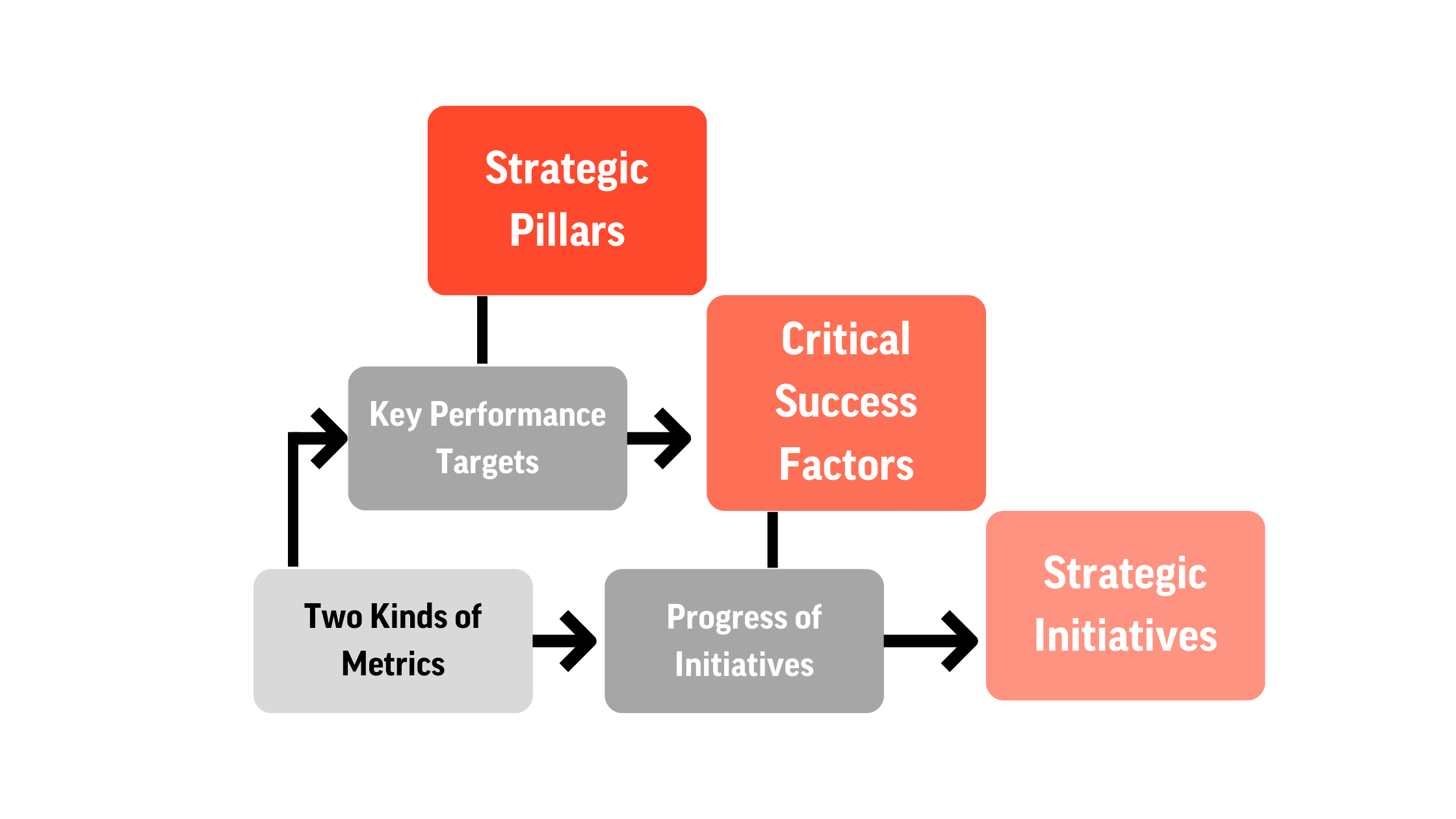Strategic Frameworks that help formulate your strategy

Before diving into the strategic frameworks I’d like to share a little story as all the new tools for formulating an organizational strategy remind us of the Bible story about the Tower of Babel:
God came down to look over the city and the tower those people had built. God took one look and said “One people, one language; why, this is only a first step. No telling what they’ll come up with next—they’ll stop at nothing! Come, we’ll go down and garble their speech so they won’t understand each other.” Then God scattered them from there all over the world. And they had to quit building the city. That’s how it came to be called Babel, because there God turned their language into “babble.” From there God scattered them all over the world.
Competing Terminologies to formulate a strategy
This ancient story describes the situation when it comes to formulating strategy. While organizations have learned to cope with multilingual working environments, a new challenge has emerged: the new strategic frameworks for strategic thinking all use different terminology. The challenge of creating unity around strategic intent is increasingly about users’ preference for a particular strategic framework. A discussion intended to foster unity can deteriorate into one focusing on form rather than content.
More Proprietary Language in Strategic Frameworks
Despite the number of tools we have today to formulate strategy, consultants and scholars are constantly developing new ones. They try to differentiate themselves by using proprietary language: giving similar strategic concepts different names.
To be fair, some of these models are for strategic analysis, others for formulating and implementing organizational strategy. A few examples of the latter: Management by Objectives (MBO); Balanced Scorecard (BSC); The Four Dimensions of Execution (4DX); Objectives and Key Results (OKR); and Pillars and Critical Factors (PCF). These strategic frameworks all have one thing in common: they are designed as hierarchies.
 New software facilitating the use of these methods, while extremely valuable, also leads to new complications. Team members are required to give up their “mother tongue” and adopt new terminology. Needless to say, most do not see the point.
New software facilitating the use of these methods, while extremely valuable, also leads to new complications. Team members are required to give up their “mother tongue” and adopt new terminology. Needless to say, most do not see the point.
Common Benefits of Various Strategic Frameworks
These strategic frameworks and their software all offer the following benefits:
1. A clear overview of the corporate mission, vision, strategy and goals
2. A breakdown of these elements into specific focus areas, with accompanying key goals
3. A list of strategic initiatives for each focus area
4. A system to encourage all team members’ alignment to the overall corporate strategy
The software then tracks implementation of initiatives, making progress transparent and measurable.
Simplifying Follow-up
Through our many years of assisting organizational leaders develop strategy, we’ve seen how important straightforward and transparent followup is to a successful implementation. The strategy may be lost during implementation if there is no simple and up-to-date overview of progress throughout the organization.
We wanted to meet this challenge. We developed a strategy implementation tracking software called DecideAct that is immune to differences between all hierarchical methodologies and strategic frameworks. While a standard system is built in for those not using a particular methodology, it will easily adapt to other frameworks. The software serves as a universal tool: if the organization changes methodologies, it does not have to change to new software. DecideAct can adapt accordingly.
Untangling the Jargon
Therefore, we’ve made life easier for those implementing strategic plans by eliminating the risk of becoming entangled in terminology. The user may then focus on content as defined by Richard Rumelt in Good Strategy Bad Strategy: Why it Matters
Despite the roar of voices wanting to equate strategy with ambition, leadership, “vision,” planning or the economic logic of competition, strategy is none of these. The core of strategy work is always the same: Discovering the critical factors in a situation and designing a way of coordinating and focusing actions to deal with those factors.
DecideAct Decodes the Code Words
DecideAct is a tracking system for strategic performance that complements the organization’s current strategic framework. It eliminates the need to learn a new language in order to determine what is most important and what to do about it. Check out all the features!










